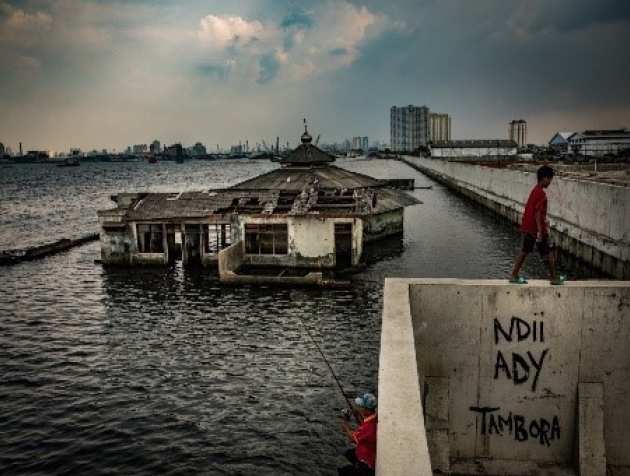Hendarto Hendarto
Assessing local and global displacements from tunnelling and water extraction in Jakarta
Started: January 2016
Supervisor: Standing, J.R.
Funding: LPDP - Ministry of Finance, Republic of Indonesia
Research Background
Despite the fact that urban development has had positive impacts on the economic growth of Indonesia, it has also created environmental issues. Firman & Dharmapatni (1994) classified environmental drawbacks as: 1. Massive conversion of land use from agriculture to industry and residential areas, 2. Water recharge areas in the uplands of Jakarta have been affected, and 3. Water demand has tremendously increased due to increases in industrial activities and the population size. Water supplies from the water companies in Jakarta seemingly do not meet the water demand. Private groundwater extraction has been increasing significantly to overcome this demand. Consequently, the combination of environmental effects and significant groundwater extraction creates another environmental problem in several places in Jakarta: land subsidence, (Abidin et al. 2015). This resulting land subsidence has several potential effects on the urban development. Although there have been previous studies dedicated to assessing the land subsidence and its impact, there are still many uncertainties and gaps in knowledge for the Jakarta case. There is a need for further study on the causes of land subsidence in Jakarta. Specific topics of interest are as follows.
a) Fitting historical records of land subsidence with water level changes to understand past and to predict future movements
b) Establish representative and accurate ground compressibility characteristics
c) Assess the effect of settlement on engineering structures
Research description
This research programme relates to ground displacements in Jakarta with the primary focus on the significant land subsidence that has been observed in Jakarta, which is still ongoing and is thought to be caused by excessive groundwater extraction. Sets of data from a site investigation, i.e. geotechnical boring and piezocone test, and laboratory work are being used to assess volume compressibility, coefficient of consolidation and permeability for each of the main strata affected by the tunnelling and water extraction operations in Jakarta.

Research aims and Objectives
The primary aim of the research is to assess local and global displacements from tunnelling and water extraction in Jakarta. There is a need to clearly quantify the influence of soil behaviour and characteristics in relation with the land subsidence taking place in Jakarta. This, so far, has not been address by previous researches.The following objectives are required to achieve the aims of the research.
- To complete a literature review and compile a list of references, with particular attention to land subsidence due to groundwater extraction.
- To collect data from the study area such as drawings and geotechnical investigation reports.
- To carry out additional site investigation works along the Jakarta Mass Rapid Transit (MRT) corridor and in areas of interest.
- To gain a better understanding of the compressibility and consolidation characteristics of the various strata through site investigation, i.e. piezo-cone penetration test (CPTu) and geotechnical boring.
- To interpret the geotechnical investigation reports from past and ongoing projects like the Jakarta MRT project.
- To evaluate ground displacements both globally (from the widespread water extraction) in Jakarta and along the Jakarta MRT alignments (from tunnelling).
- To obtain settlement analyses based on field and laboratory works to assist with the prediction of future settlements. This analyses should also be calibrated and validated using the results from historical subsidence and water extraction data.
- To anticipate the effect of groundwater extraction along the Jakarta MRT routes and global areas in Jakarta.
- To identify potential problems influencing buildings and infrastructure associated with land subsidence.
References
1. Abidin, H.Z., Andreas, H., Gumilar, I. & Wibowo, I.R.R. (2015). On correlation between urban development, land subsidence and flooding phenomena in Jakarta. the International association of Hydrological Sciences, 370. doi:10.5194/piahs-370-15-2015.
2. Firman, T. & Dharmapatni, A.I. (1994). The Challenges to Sustainable Development in Jakarta Metropolitan Region. Habitat International, 18 (3), 79 - 94. doi:https://doi.org/10.1016/0197-3975(94)90006-X.
HOANG NGUYEN
 PhD Candidate - Geotechnics
PhD Candidate - Geotechnics
Department of Civil & Environmental Engineering
Imperial College London SW7 2AZ
h.hendarto15@imperial.ac.uk


